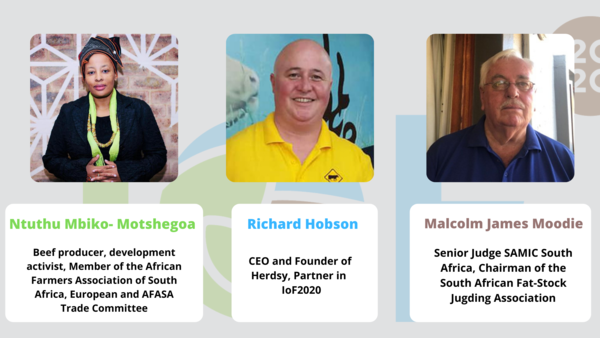Herdsy is one of the companies supporting our Use Cases "Early Lameness Detection" and "Herdsman+". As the IoF2020 project is coming to an end, Herdsy is now looking to expanding at the international level. We met Richard Hobson, CEO and founder of Herdsy, and his partners in a South-African project targeting emerging women farmers.
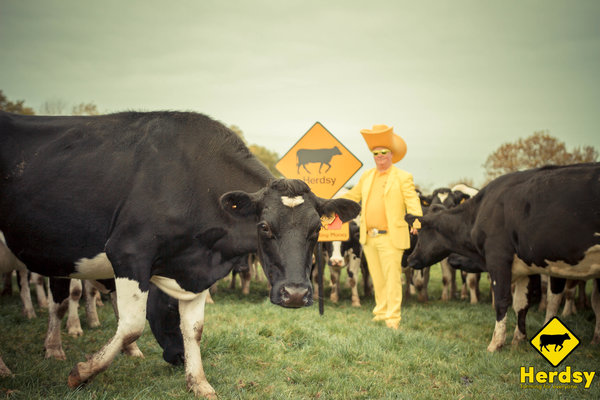 Can you introduce yourself and Herdsy in a few words?
Can you introduce yourself and Herdsy in a few words?
Richard Hobson (Richard): My name is Richard Hobson, I am CEO and founder of Herdsy. We developed a very low-cost technology worn around the neck of the animal. It helps farmers and ranchers to monitor their resource use such as water or feed and thereby increasing profitability. We perform the monitoring on an individual level, which has never been done before in the history of the beef industry. We bring precision to beef farming.
We were contacted by Paul Malone from TSSG, who was the main applicant for grants in this organization. He wanted to validate machine learning models able to detect lameness in beef cattle. He wanted to try the solution outside of Europe, and I suggested South Africa. South Africa is very different in terms of ranching systems. As a consequence, we joined the IoF2020 project as a mall provider, along TSSG but also ENGS, which is a large Israelian dairy company alongside other IoT technology companies. As we are kind of a small player, it was great for us to be able to reach this level.
This is your first experience in South Africa, why this country and how did you get started?
Richard: South Africa was always on our mind, with 14 million beef cattle. To give you a better understanding, entire Europe has 16 million. This is almost the same amount on the scale of only a single country. They also have a much bigger landmass, and hence, bigger farms. It has different challenges in terms of climate and technology which gave us the chance to implement our solution and gain experience in conditions we would have not encountered in Europe. The conditions in South Africa resemble other places like the US, South America, and Australia.
Malcolm Moodie (Malcolm) - Senior Judge SAMIC South Africa: Africa being a dryer area than Europe is a challenge but our ranchers are among the best in the world. We do provide top quality animals. A big challenge is the conservation of grasslands, and to try avoiding overgrazing. 47% of the animals in South Africa belong to emerging farmers. We want to improve the grassland in these areas as well as the quality of the beef.
Richard: South Africa imports about 17% of its beef, they cannot satisfy their domestic demand. We thought that this was a great opportunity for local farmers to fill that demand and to improve the meat quality. As Malcolm - our expert on the beef industry in South Africa - mentioned, an important number of animals are owned by emerging farmers who graze their cattle on common land. This land has the tendency to be overgrazed, causing environmental distress and animal welfare issues as well. If we could improve this, it would have a great impact environmentally, economically, and socially as well.
You developed this solution in Europe, however, we can see now that it can have applications in a very different context.
Richard: I designed this system at home, in Ireland, on my small family farm. I never thought that it could be applicable to large ranchers and farmers. The farms we work on in South Africa will be 20 times larger than in Ireland and the herd size will also be 20 times as large. But we saw that large farms have a way to harness the benefits of the solutions and increase them. That gave us the confidence to go for example to Texas (USA): we were accepted in the Deep Tech accelerator of the University of Austin. We are one of the few European companies to be invited to the US for a cattle technology. We can see many similarities in structure, size, and methods between the US and South Africa. Being part of the IoF2020 project paved the way for us to get such opportunities.
"The IoF2020 project enabled us. We are a small company, with only 4 people. For us to go to new countries and raise money on our own as a small start-up, competing with bigger companies... It would have been very tough. IoF2020 gave us the opportunity to develop internationally and removed part of the risk."
How participating in IoF2020 benefited your international development?
Richard: The IoF2020 project enabled us. We are a small company, with only 4 people. For us to go to new countries and raise money on our own as a small start-up, competing with bigger companies... It would have been very tough. IoF2020 gave us the opportunity to develop internationally and removed part of the risk. We were working on a project with Malcolm, on one of the biggest farms in South Africa. We also received a lot of publicity, it really increased our visibility. It lifted our reputation: people could see we were “punching above our weight”, dealing with high-rank officials in South Africa, dealing with other big companies. In our Use Cases, we were cooperating with ENGS, a 50 million dollar company. We had press coverage reaching until Malaysia, where we have never been.
The European Union and IoF2020 were like a big rock being thrown into a big pond. We felt the ripples and the impact of it going surprisingly far.
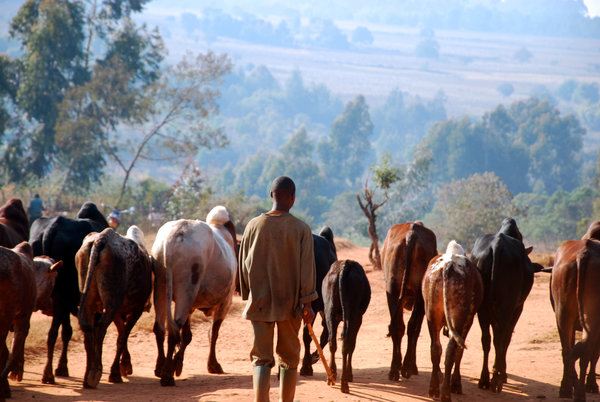
How did you get to know each other and how did you get started on this project in South Africa?
Malcolm: I did not know about the IoF2020 project before starting to work with Herdsy. I have been working my whole life in the livestock industry in South Africa and I grew up on a cattle farm. For many years I have been a senior judge and trainer of other judges in the cattle industry in South Africa. Ntuthu is also a very sought-after professional in South Africa in the beef industry, and we worked together in the training field. We specifically both focused on emerging farmers and on how to improve the quality of their beef. We are getting more and more animals to work with, but we need to improve the quality of the cattle by using monitoring technology to maintain productivity while increasing animal welfare. Ntuthu and I are on a mission to improve the quality of the cattle of emerging farmers. Usually, in rural communities, the men would work in the mining industry and the women would look after the cattle. This is why we focused on the training of women. If we improve the quality of the animals, we can make a real difference in the quality of life of these communities but also in the environmental preservation of the land.
Richard and I met in Nampo, one of the largest farm shows in South Africa. I was introduced to Richard by a common friend in Nampo. We had the same goals and I introduced him to Ntuthu.
"I do believe that in 20 to 30 years, Africa will be feeding Europe. And the future of beef in Africa is female, and we want to be part of that change."
What are the next steps for Herdsy in South Africa?
Malcolm: We plan to work with our South African government, starting a trial-training session with emerging female farmers and show them how they can improve the quality of their animals. We encountered delays due to the COVID-19 pandemic, some areas could not be reached due to travel restrictions.
The Black Emerging Female Farmers (BEFF) project is going to consist of 30 cows and one bull. The top quality animals will be placed on a farm selected by us and the Department of Agriculture of the South African government. The cattle will be there for training purposes. As a cattle judge, I will purchase the animals. The idea is to train 25 female emerging farmers who are already involved in cattle breeding in their communities. The training will consist of grouping the female farmers into 5 groups of 5. We can then select 6 top cows owned by each farmer, which will give us 30 top cows per group of farmers. This will give us 150 female farmer-owned cattle to breed with. A bull of their breed choice will be purchased for each group to breed with the group's 30 cows. The same management practices trained on the training group will be applied to the group cattle. By grouping the animals, we can then select the top cows and by breeding, improve the cattle.
Richard: The female farmers will be involved in an 18-month long training program which includes 12 months of hands-on experience. They will work with Malcolm and other experts learning about grassland management and animal management. The female emerging farmers will be involved at every step, from injecting the animal to the handling of the animal. They will have 2 weeks on and 2 weeks off. In the last part of 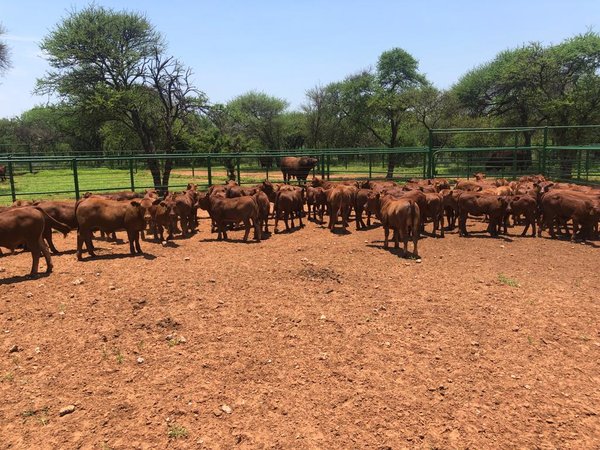 the program, we will be using Herdsy technology to monitor the cows as the farmers return with this cattle in their community. This will allow the experts to evaluate the emerging farmers via the animal, using the Herdsy technology. They will be able to step in if necessary, this way the contact between the experts and the emerging farmers will continue. Our idea is that “if you cannot see it, you cannot be it ”. Ntuthu is our chairlady, she is a tremendous advocate for female farmers and a role model. Malcolm writes training programs for the South African government, and after much studying, we found that the future of African beef would be female. They are the group that is the most pragmatic. As Bill Gates puts it, if you want to help people you have to look at agriculture, and if you want to look at agriculture you need to look at livestock. We saw an opportunity to use beef to help people out of poverty, improve job opportunities, provide high-quality food and a steady income for these emerging female farmers. They will become a key member of their community by sharing their valuable knowledge.
the program, we will be using Herdsy technology to monitor the cows as the farmers return with this cattle in their community. This will allow the experts to evaluate the emerging farmers via the animal, using the Herdsy technology. They will be able to step in if necessary, this way the contact between the experts and the emerging farmers will continue. Our idea is that “if you cannot see it, you cannot be it ”. Ntuthu is our chairlady, she is a tremendous advocate for female farmers and a role model. Malcolm writes training programs for the South African government, and after much studying, we found that the future of African beef would be female. They are the group that is the most pragmatic. As Bill Gates puts it, if you want to help people you have to look at agriculture, and if you want to look at agriculture you need to look at livestock. We saw an opportunity to use beef to help people out of poverty, improve job opportunities, provide high-quality food and a steady income for these emerging female farmers. They will become a key member of their community by sharing their valuable knowledge.
Ntuthu Mbiko-Motshegoa (Ntuthu) - beef producer, development activist, and member of the African Farmers Association of South Africa: The importance of this program, is the focus on quality and skill development. In that process, we want to make sure that these female agri-entrepreneurs get technical assistance and technical experience. In the development of this program, we wanted to make sure that the business aspect would be put forward as well. We want them to be sustainable economically. We want to create more job opportunities in their rural communities. There is more than 41% of common land at these women’s disposal. When you are able to intervene at the grassroots level, you are not only empowering the communities of a particular area, these women impact the GDP of the sector and the country.
Richard: Traditionally cattle is seen as a sign of wealth in these rural areas. What happens is that farmers tend to keep cattle that are too old, and they are forced to breed with other animals. This leads to a vicious circle where weaker animals are breeding with weaker animals, producing weaker animals. We want to stop this development with education. Female cattle farmers are in general more pragmatic, they rather see the cattle as a source of income than as a symbol. It has been proven that women spend money in a more efficient way than men, focusing on outcomes for their families (education, nutrition). We know that beef does not have the best reputation at the moment, but we see beef not only as a way to help the environment but also as an economic lifeline for these female farmers. Women in rural areas might have been denied access to technology, access to education due to economic circumstances, or just because they are women. We believe that this situation is wrong. Malcolm and Ntuthu are great advocates for the South African beef industry. Women make up for 60% of the workforce in agriculture globally, people tend to forget that. There is no other training of this kind at the moment. This is hopefully a program that we can expand to other parts of Africa like Botswana or Tanzania. Tanzania has the third-largest amount of cattle in Africa. If you can improve Tanzania’s beef industry, you can most probably feed Africa.
I do believe that in 20 to 30 years, Africa will be feeding Europe. And the future of beef in Africa is female, and we want to be part of that change.
Ntuthu: To build upon what Richard said, the beauty of this program is that it fosters the economic inclusion of women. We are excited to see cooperation between the private sector and the governmental agencies. As a female agri-entrepreneur and livestock farmer myself, there are ideas out there but we need to make sure to put them into practice. It is important to us as women that the private sector takes the lead. In about 20 years of experience in this value chain, we have never seen anything close to this. As a woman, I am excited to see such a project entrusting women with this responsibility to lead the change in their communities.
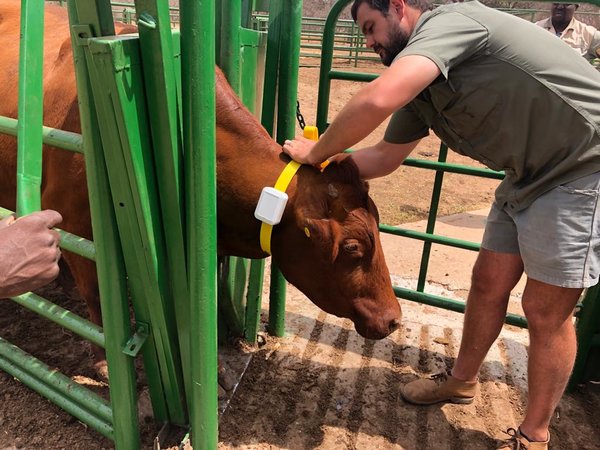 As we see smart farming getting more prominent, farm work is also evolving. Are the female farmers going to be trained in using this new technology?
As we see smart farming getting more prominent, farm work is also evolving. Are the female farmers going to be trained in using this new technology?
Richard: Animals will be checked on from the beginning with Herdsy technology. During the training, Malcolm and other experts will be looking after the animals. The female emerging farmers will be trained on the technology, which can be used as a teaching tool. Using the collected data, analyzing it. But Herdsy will really come up towards the end of the project, once the trainee goes back to their communities, for remote monitoring.
Malcolm: With Herdsy we can monitor the animals 24/7. we want to know why, when, and where the animals are grazing. Sometimes animals tend to overgraze and the quality of the grass could be different according to areas. we need to use this information to do farm planning. We can change the camping system, forcing the animal to graze in other areas. We want the trainee to see and understand what the animals are doing. We also have a specialist of grazing onboard Frits van Oudtshoorn. He is going to show them what is happening in the field and how to change the pattern for the grazing of the animals. We want also to increase the quality of their animals by focusing on high-quality animals in order to reduce the number of animals grazing while producing more beef. This is going to help to protect the area, thus reducing the cost of carrying animals
We aim also to empower them to use smart farming and to gain important digital skills. These 25 women are going to be ambassadors of these farming techniques. If we can improve the grasslands of Africa, we will also help to have an impact on the carbon emissions of beef cattle and on climate change.
Ntuthu: Another additional value of this project will be to reduce car accidents. If you look at the technology, we will be able to track animals all the side. Road accidents caused by roaming animals in rural areas can be avoided.
This program has the potential to not only change the lives of these women but to offer more opportunities for trade at the continent level.
"We aim also to empower them to use smart farming and to gain important digital skills. These 25 women are going to be ambassadors of these farming techniques. If we can improve the grasslands of Africa, we will also help to have an impact on the carbon emissions of beef cattle and on climate change."
What would be the key indicators that this project is successful?
Ntuthu: The main performance indicator would be job creation which will improve the livelihood in these communities. Women can become more financially independent and we help reduce gender-based violence this way. What is also important is the meat that would be produced, and how we can improve the quality of the meat produced by small farmers.
Richard: We would like to see the program grow in South Africa and across the continent. We want to show that it can work and inspire other stakeholders to develop their own version of the program.
Malcolm: We do not only want to improve the situation for individuals. If this is a success story, governments in Africa will be more likely to back it up financially. That will then give this process leverage to change the sector and improve the plight of female emerging farmers.
What are you looking forward to in the future?
Richard: It is important to mention that Herdsy is a small company of 4 people. We encourage any bigger company who is interested in this topic or in the technology, to contact us. On another level, the European Union had a huge impact as they can provide us with funding. We could use this financial leverage to produce more trade than aid, inspiring and training African farmers to produce less CO2. This would be certainly beneficial to the economy and the environment. If anyone is interested in getting involved, together we can do more.
Malcolm: The more funds we get, the larger we can make the program and the quicker we can disseminate it. We can involve companies in the training, we already involve private actors such as feed companies. This also allows the female farmers to understand that they can get expertise from these companies.
Ntuthu: We really appreciate the involvement of the commercial sector and sharing the knowledge with the emerging farmers. Getting funds will allow us to make this a win-win situation for all parties involved.
Learn more about Herdsy on their website.
